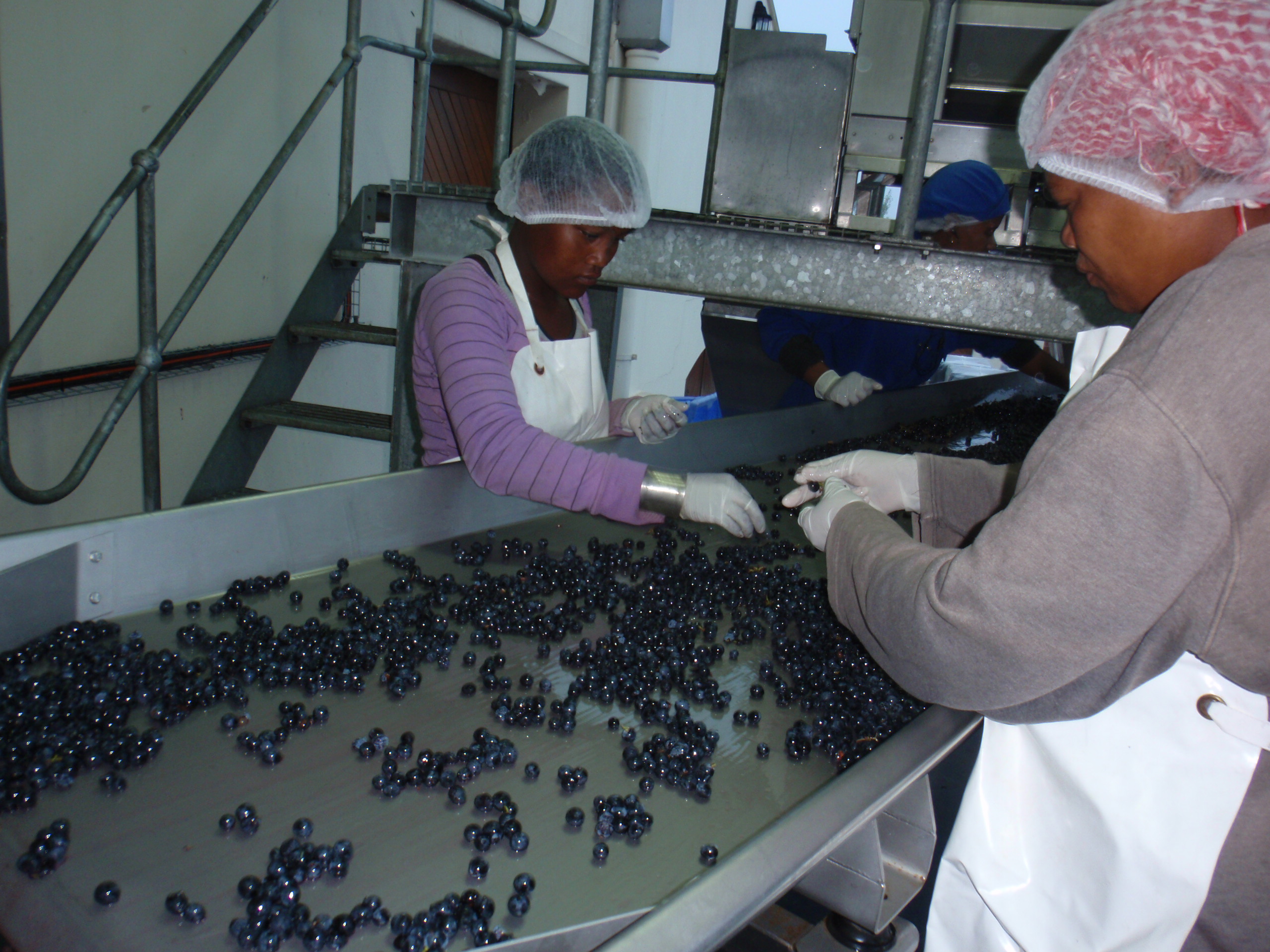TJ Wine’s Dirty Secret Ingredient: Mouse Bits

CN: Spiders; bees; small and quickly darting animals
Note: The image above, taken by me, is from a winery mentioned in the post that practiced exemplary sorting methods. However, I’ve visited and helped out for a few hours on many, many other wine farms. The following examples of animal encounters in the vineyard are, like everything I write in this series unless otherwise noted, general industry observations, and are not implied to be associated with the farm depicted here or any past or present employers. Please don’t stop drinking anyone’s wine because of me. That’s, like, the opposite of my goal in this series. Now back to our program.
“Why is Trader Joe’s wine so cheap?” The answer, according to Quora user Chris Knox, is <cue Death Star theme>
THE BLOOD OF TINY CREATURES.
And then they add sugar and other horrible things to the poor wine to make it taste good. Then they swindle you into buying it for the whopping price of $3.
I’m sorry to be the bearer of bad news, here, so you might want to sit down and pour yourself a drink. Spoiler alert: if you offer me TJ I won’t turn it down.
It would be nice to think that each grape cluster was hand-picked from every vineyard, lovingly checked by a team of workers with incredibly soft and pristine hands for any sight of debris or dirt, then carried, one by one, to the tank inside a temperature-controlled protective bubble, to be stomped by the delightfully tender and Eco-sanitized feet of a Lucille Ball lookalike.
Alas. Welcome to agriculture.
Farms are, um, outdoors, and that includes wine farms because, yes, wine is a farm product. That means that mice and moles and chipmunks and other rodents live in the ground. Birds make nests in the crops. Spiders build webs in the fields and on the equipment. Hornets and wasps and yellow jackets––my god, the yellow jackets––flock to the sweet grapes and suck deliriously on their juice, none too happy to be interrupted by innocent pickers. Basically, late fall in the vineyard looks like that scene from The Hunger Games.
I’ve picked spiders in the tarantula family out of totes. I’ve been stung by yellow jackets while picking more times than I can count. I’ve found grasshoppers and crickets and caterpillars in the buckets. I’ve found birds’ nests in the vines. I’ve chased cows out of the vineyards and dealt with grape-stealing baboons. I discover four-way Japanese Beetle orgies while leaf-pulling every day. Sometimes I hum “Lovers in a Dangerous Time” or “We Found Love (In A Hopeless Place)” while I watch.
Before you rush off to pour your wine into the sink, take a deep breath. Farms are outside. Outside has small creatures who sometimes can’t be avoided. They bite the staff and hang out in the barn and, sometimes, they make it as far as the sorting table, though we scare a lot of them off by walking by or driving in an ATV or running the harvester (machine harvesting is not unique to cheap wine, though it’s more common, since it’s faster). That’s where grapes are hand-sorted and things like moldy or underripe clusters, debris, and bugs can be plucked out before the grapes head to the crusher.
Sometimes the little guys make it into the crusher. If that were to happen, they’d disappear into the must as it ferments over a period of several days, then what’s left of them would be filtered out through winery equipment, multiple rackings (siphoning the wine from one tank to another to clarify it, leaving sediment at the bottom), and specialized filters.
Now, pour yourself a refill. Not all wines are made by the same horror-story image of “processing”––as you might expect, in general, you get what you pay for. As I mentioned in my wine pricing post, a large portion of what you’re paying for when you buy wine is the quality of the grapes. More expensive wines are made from grapes that are often hand-harvested and almost always sorted to some extent, like one farm where I worked in South Africa that had a multi-step and very meticulous single-berry sorting process.
This takes labor and time, and grapes for cheaper wines don’t get this treatment. They’re picked from warm and reliable blocks of land where you’re guaranteed to get slightly overripe fruit at a low price (this is why many inexpensive wines come from California and Australia). Sweeter fruit tastes better. They get harvested by machine, crushed en masse, and fermented, and finally filtered before bottling, just like the vast majority of wines in the world. There are some wines that are unfiltered; these tend to be wines from very small batches of grapes that were hand sorted for maximum quality and watched closely throughout vinification, since leaving wine unfiltered is a risk that wineries generally don’t take on large batches of wine due to expectations of clarity.
As for adding sugar? Welp. Boosting sugar, acidity, and other structural elements is routine in commercial and home winemaking (though adding sugar or adding acid may be illegal in some wine regions). Ideally, you want fruit so perfectly ripe and balanced from the vineyard that you don’t have to do a thing––just throw it in the tank and watch it ferment. But at minimum many wineries add lab yeast and sulfites, since wine, as I remind everyone time and time again, does not occur in nature without human intervention. It’s great if you can get away with the bare minimum level of “manipulation,” but weather and other elements (pests, disease, damage from natural disasters) vary from year to year, and the winemaker must respond. If the difference between the best wine you can possibly make in a given year and something utterly unmemorable is a little tartaric acid, a bit of sugar, or some extra time in an oak barrel, why not do that?
Cheap wines, like pop, macro-brewed beer, and other mass-produced products, aim for consistency. Rather than showing off differences from vintage to vintage they are made to display the same level of sweetness, alcohol, and other traits every time they’re made so costumers get what they expect.
The people who are going to respond to this information with “well this is why I only drink ‘natural wine’” are probably the same people who worry about their food going through too many “processes,” who claim to eat only “foods your grandmother would recognize.” Power to them, but remind me of that philosophy when you need birth control or airbags in your car or the polio vaccine. It’s good to know what the processes are that make up what you eat and drink, but “process” in and of itself is just a word. Drink your TJ or don’t, but know that it’s unfair to single this brand out for any of the practices described.




